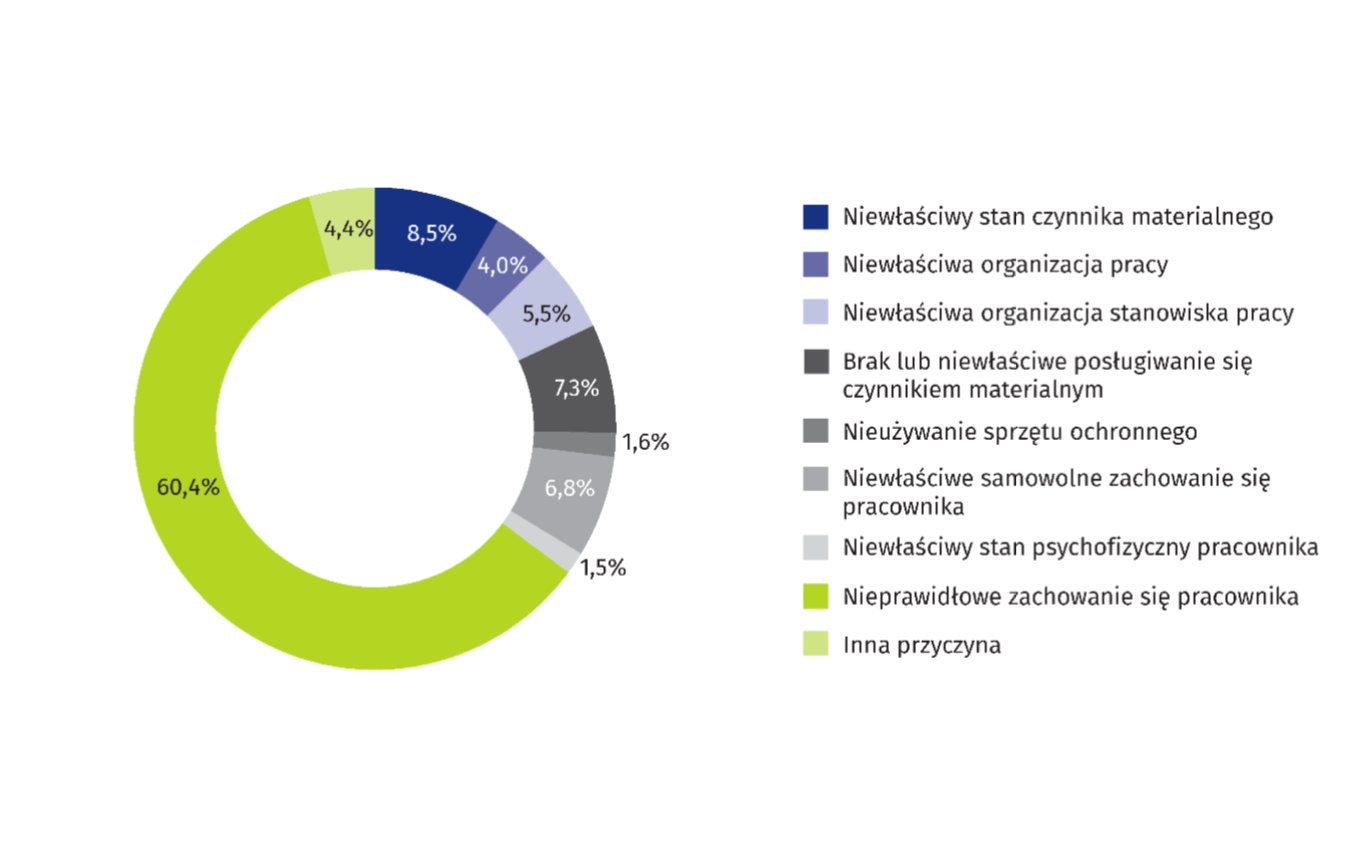Occupational health and safety: a task not only for the employer
Occupational health and safety (in short, OHS) is a set of regulations and rules, the goal of which is to prevent accidents at work and occupational diseases that may occur in the workplace.
In practice, however, accident prevention is not so simple. As shown by statistics. In 2018, there were about 58,000 work accidents in Poland (those reported, i.e., reported to ZUS). You may ask, "Is it too many?” It depends on how you look at it, because on a monthly basis, there are 4,833 accidents at work. Breaking it down into individual days, it turns out that 161 employees are injured every day in our country. I would add that these statistics do not include agriculture.
Do we have any influence over this? Can any preventive measures be introduced? Yes, most definitely. Support will be provided to employers, managers, and employees by occupational health and safety specialists who carry out their tasks under the so-called health and safety services. The tasks of these specialists are defined in separate regulations.
Thinking about prevention, the analysis presented by the Central Statistical Office (GUS/stat.gov.pl) in the January–September 2018 period (source: GUS/stat.gov.pl) gives us a lot to think about.
Why do accidents happen?
You will find the answer by analyzing the statistics below.

Unfortunately, this data shows that the perpetrator of most accidents at work is not the employer but, to a large extent, the employee himself, who often generates almost 70% of all accidents at work through their behavior. Losses in this respect are borne by the employee (loss of health, life, and suffering), the employer (absence of the injured party, which for the employer means disruption of work organization), the organization (others have to perform the task for the absent injured party, e.g., due to an urgent order), and, in practice, we ourselves, as taxpayers. And so, it’s a bit of a Catch 22 situation. With this arrangement - NOBODY WINS AND EVERYONE LOSES, including the Social Security Administration!
One of the goals that a conscious employer should set for himself is to improve employees' awareness of compliance with safety rules. This process can be achieved through appropriate and specific training in the field of occupational health and safety, fire prevention, or pre-medical first aid. In companies where the employer spares no expense on good training, these activities often translate into improved health and safety at work. As a result, the statement that one zloty (1 PLN) spent on prevention pays off tenfold becomes true.




